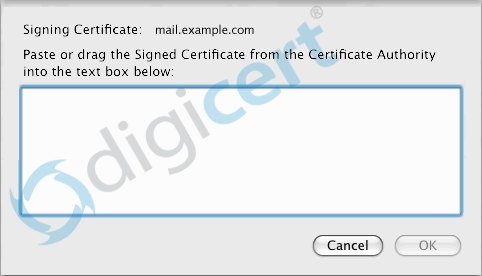
- #Make ssl crt for apache on osx install
- #Make ssl crt for apache on osx pro
- #Make ssl crt for apache on osx password
Run one of the commands in the "Examples" section of the instructions for your DNS provider. Run one of the commands in the "Examples" section of the instructions for your DNS provider, To get a wildcard certificate on this system, you'll need to run Certbot in Docker. To confirm that your site is set up properly, visit in your browser and If that command completes without errors, your certificates will renew automatically in the background. You can test automatic renewal for your certificates by running this command: Run the following line, which will add a cron job to /etc/crontab.Įcho "0 0,12 * * * root python -c 'import random import time time.sleep(random.random() * 3600)' & $(command -v certbot) renew -q" | sudo tee -a /etc/crontab > /dev/null If you're feeling more conservative and would like to make the changes to your Apache Run this command to get a certificate and have Certbot edit your Apache configurationĪutomatically to serve it, turning on HTTPS access in a single step.
#Make ssl crt for apache on osx install
Run this command on the command line on the machine to install Certbot.Įither get and install your certificates. Remember that in one year that key will no longer be valid, so you'll have to walk through this again.SSH into the server running your HTTP website as a user with sudo privileges.įollow these instructions at Homebrew's site to install Homebrew. It is okay to add an exception for your browser so the certificate will be accepted.Ĭongratulations! You've just added a self-signed certificate for Apache2. You should immediately be greeted by a Connection is not secure error this happens because your browser will report that Apache is using a self-signed certificate. To do this, open a browser and point it to (or the DOMAIN/IP of your server). There may be nicer, better ways of doing this. I couldn't find anything specific on the net about this, so I thought I'd chuck this up here. Restart Apache, and you're ready to test if the keys are enabled. The first stumbling block was to get passenger and apache to play nice with SSL on OSX I am running Leopard (not SNOW Leopard) and here is what I did to get it to work. SSLCertificateKeyFile /etc/apache2/ssl/server.key SSLCertificateFile /etc/apache2/ssl/server.crt SSLCertificateKeyFile /etc/ssl/private/ssl-cert-snakeoil.key S SLCertificateFile /etc/ssl/certs/ssl-cert-snakeoil.pem Open the file with the command sudo nano /etc/apache2/sites-enabled/nf. The next step is to edit the nf file we just created. Sudo ln -s /etc/apache2/sites-available/nf /etc/apache2/sites-enabled/nf Generate the required Certificate Requests using Terminal.app: sudo openssl req -new -key /etc/apache2/server.key -subj /C/ST/L/O/CN/emailAddress/.

Now we must create a symbolic link for the default-ssl file with this command (which is one line): Issue the command sudo service apache2 restart. You must ensure that Apache2 is using mod_ssl.so. Sudo cp server.key /etc/apache2/ssl/server.key Configure Apache2 to use the certificates Sudo cp server.crt /etc/apache2/ssl/server.crt The following commands will do the trick: The final step is to move the necessary files. rnd rnd and then the command to generate the certificate will work. Rename that file with the command sudo mv. rnd file on the working directory if so, it is probably owned by root.

Before setting up the self-signed certificate, make sure that Apache is already installed on your VPS. This tutorial will guide you to create and install Self Signed Certificates on Apache for Ubuntu 12.04. When running the above command, you may wind up receiving an error that says: An SSL certificate can reveal the virtual private server’s identification information to the site visitors.

You'll have to remember to generate a new certificate in one year. The above command will generate a certificate that is valid for 365 days. Openssl x509 -req -days 365 -in server.csr -signkey server.key -out server.crt Now it's time to generate the certificate. To remove the password, issue the following two commands:
#Make ssl crt for apache on osx pro
SEE: Power checklist: Vetting employees for security sensitive operations (Tech Pro Research)
#Make ssl crt for apache on osx password
Understand, however, if the server or Apache does restart and you (or someone on your staff) isn't there to enter the password when prompted, Apache will not be able to start and the service will remain unavailable. If you are 100% certain you will always be there to enter the password (when either the server or Apache is restarted), and you'd rather keep the additional security, you can skip this step. If you do not remove this password, Apache will not be able to start without prompting for said password to be entered. The key we generated has a password that has to be removed. At this point, you'll be asked a number of self-explanatory questions (Country, State, City, etc.).


 0 kommentar(er)
0 kommentar(er)
